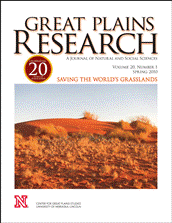Center for Great Plains Studies

Great Plains Research: A Journal of Natural and Social Sciences (through 2013)
Date of this Version
Fall 2003
Document Type
Article
Abstract
Unlike most of the Great Plains, Texas's Edwards Plateau lies near large, rapidly growing metropolitan centers. County-to-county migration data for the period 1985-1990 were used to examine migration patterns in Edwards Plateau counties. Weighted standard distance and stream efficiency values were used to analyze county immigration fields of 28 nonmetropolitan counties. A key finding was that net in-migration to counties closest to metropolitan areas was not mere "urban spillover." There were also indications that counterurban migration extended beyond metropolitan-adjacent counties to more sparsely populated destinations. Counterurbanization was occurring from central counties of the nation's largest metropolitan areas and some Texas metropolitan areas. In-migration from the Gulf Coast of Texas played an important role in the Edwards Plateau. The migration system of the Edwards Plateau appears to have functioned differently than nonmetropolitan counties in the High Plains. Continued change is supported by data from the 2000 census.


Comments
Published in Great Plains Research 13 (Fall 2003): 311-27. Copyright © 2003 The Center for Great Plains Studies, University of Nebraska–Lincoln. Used by permission.